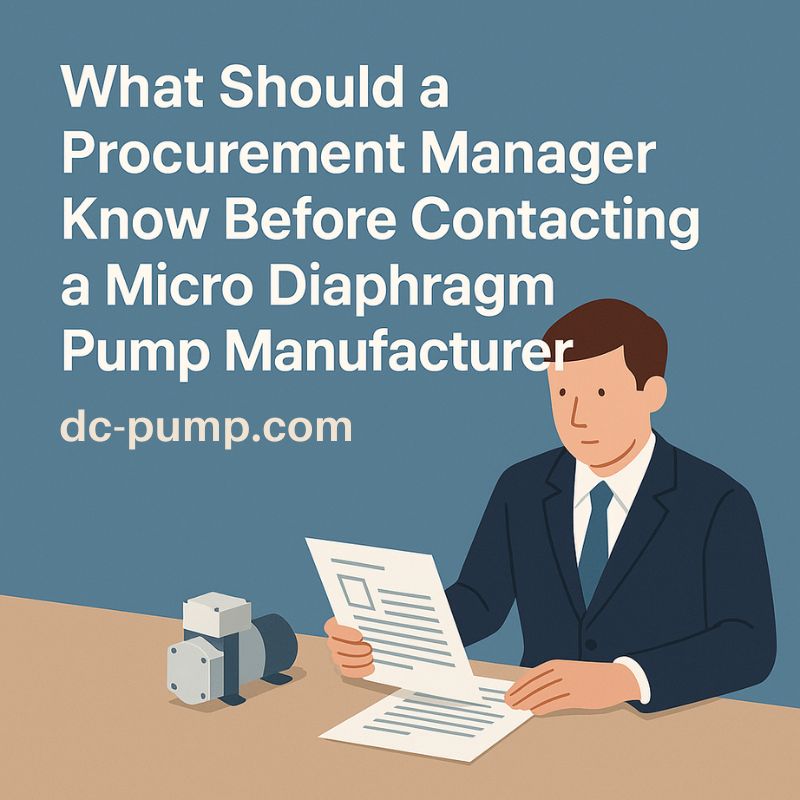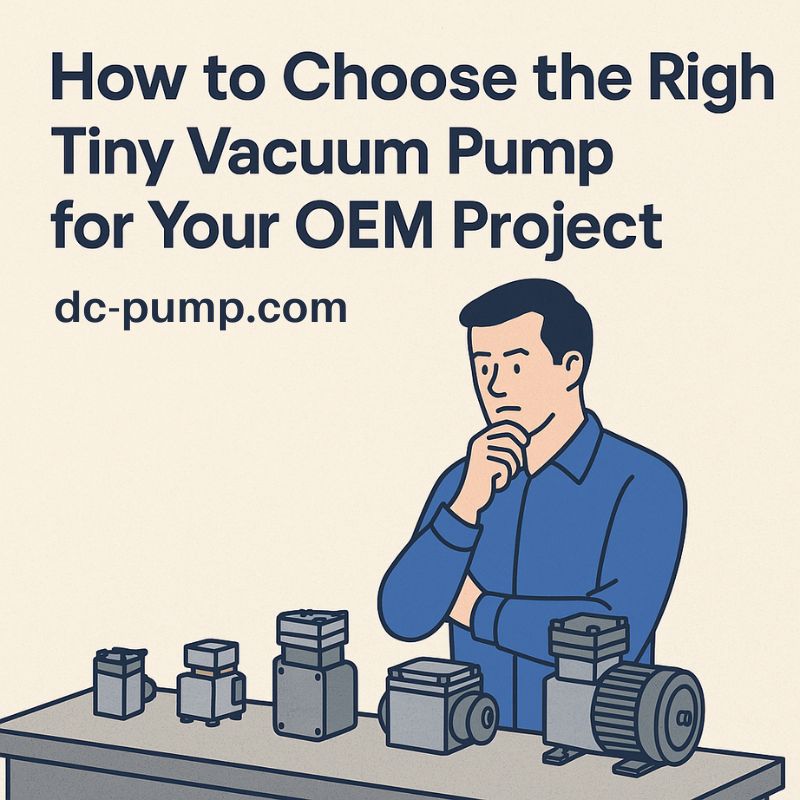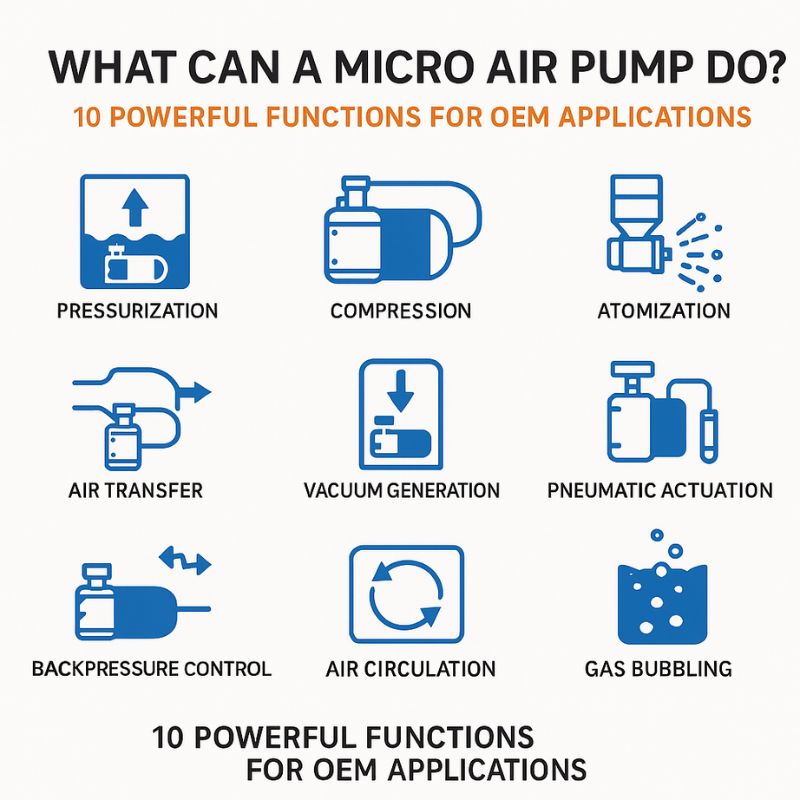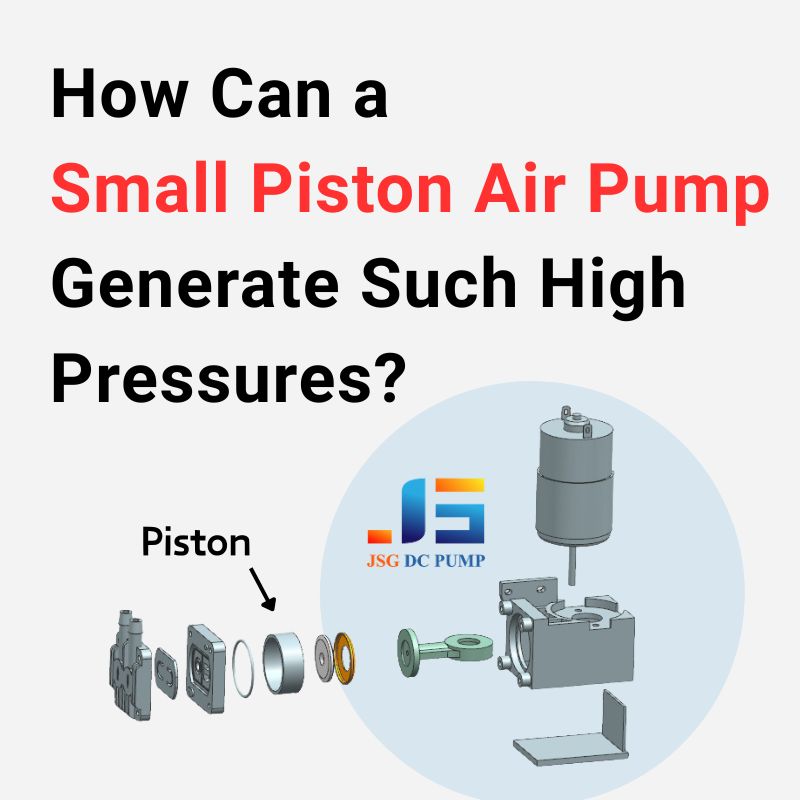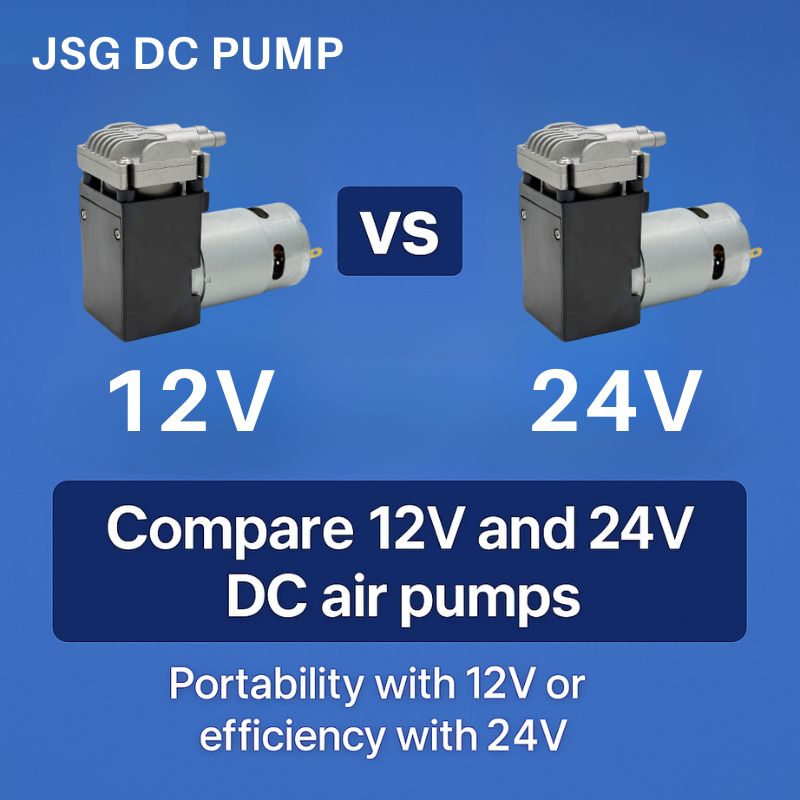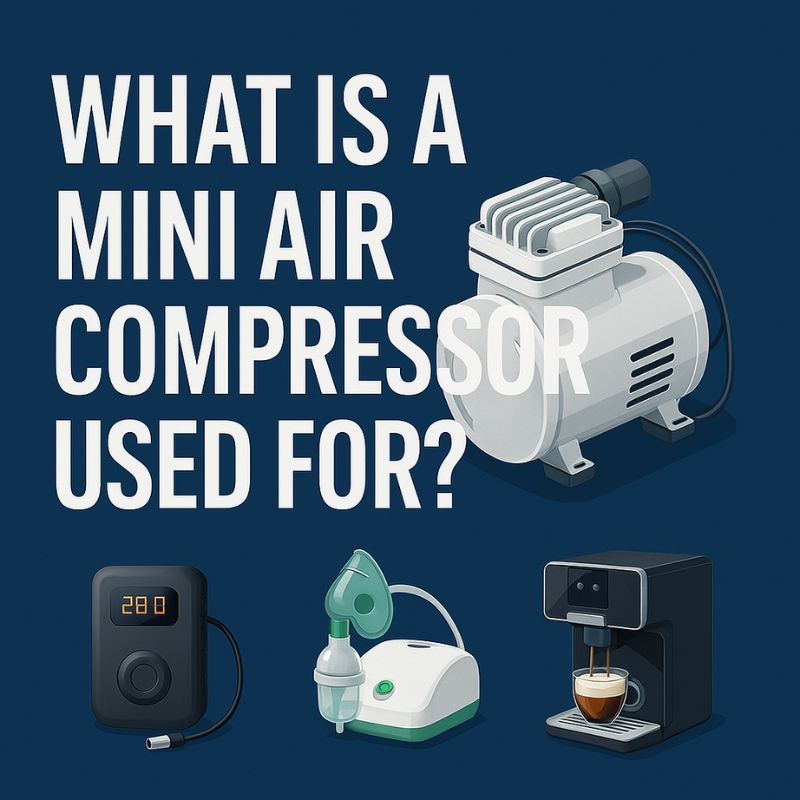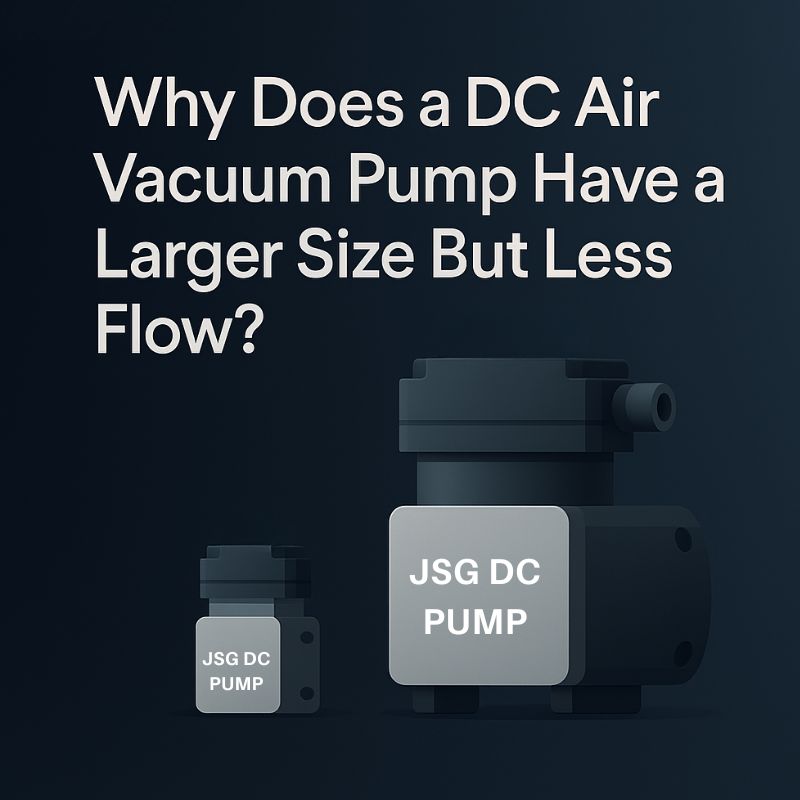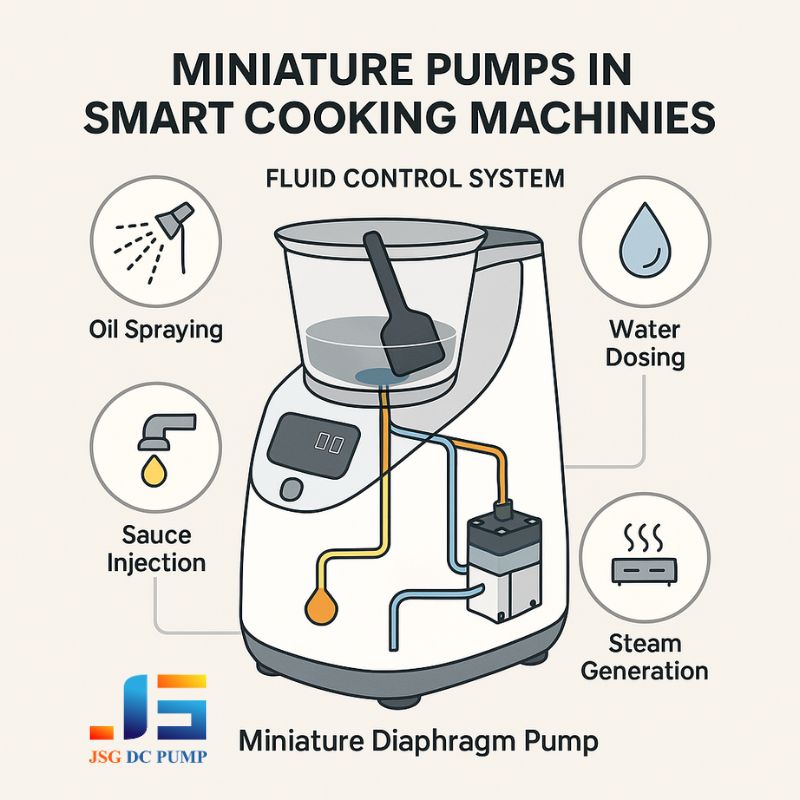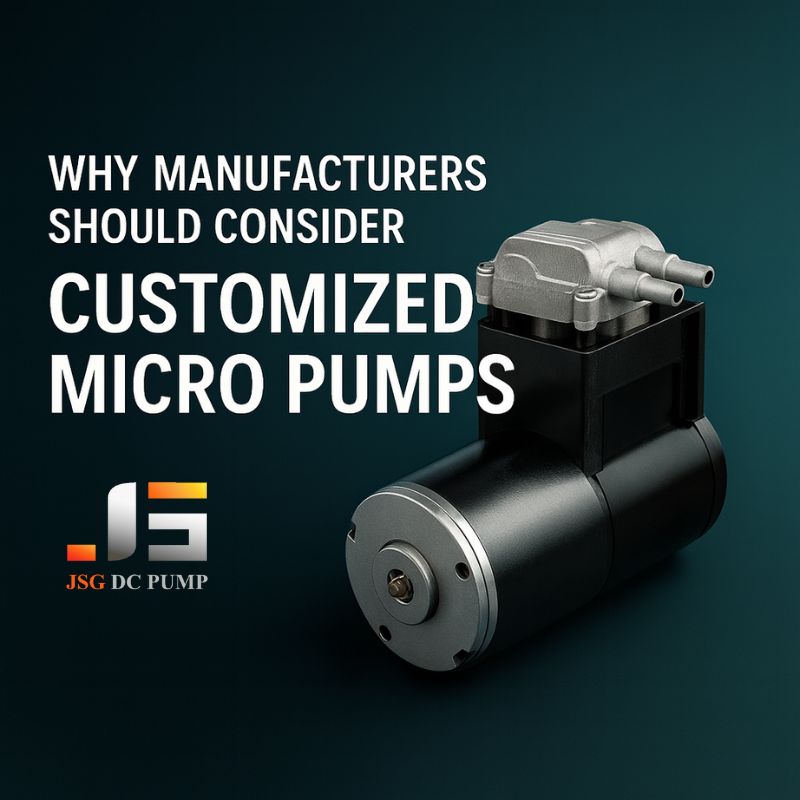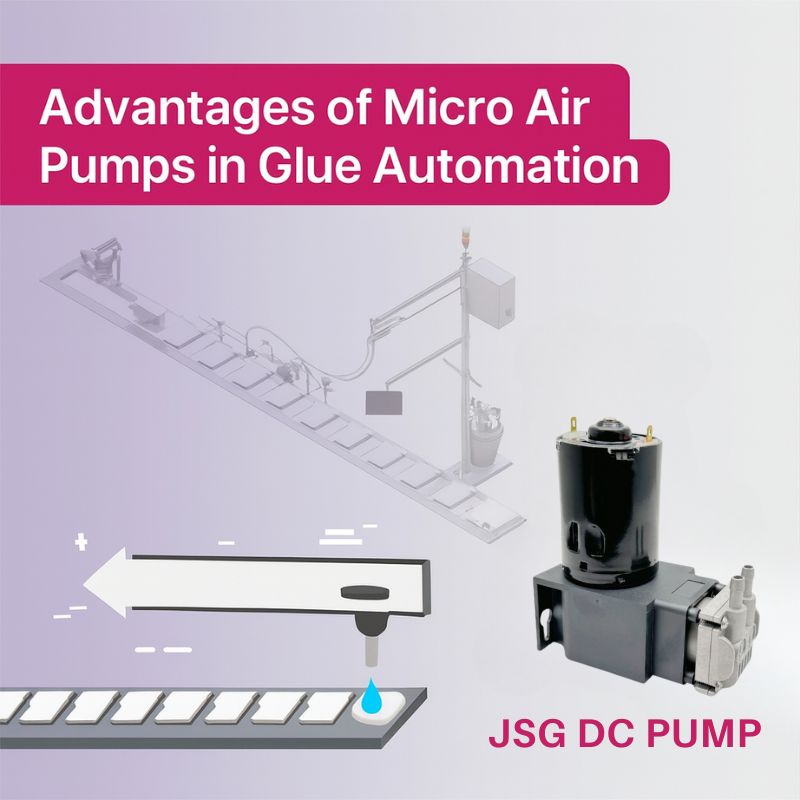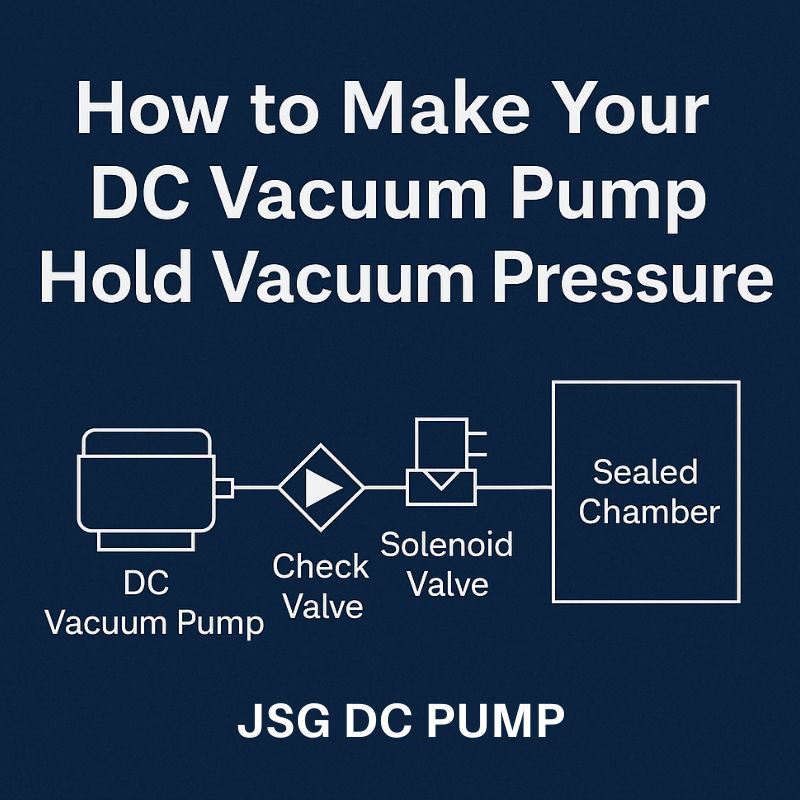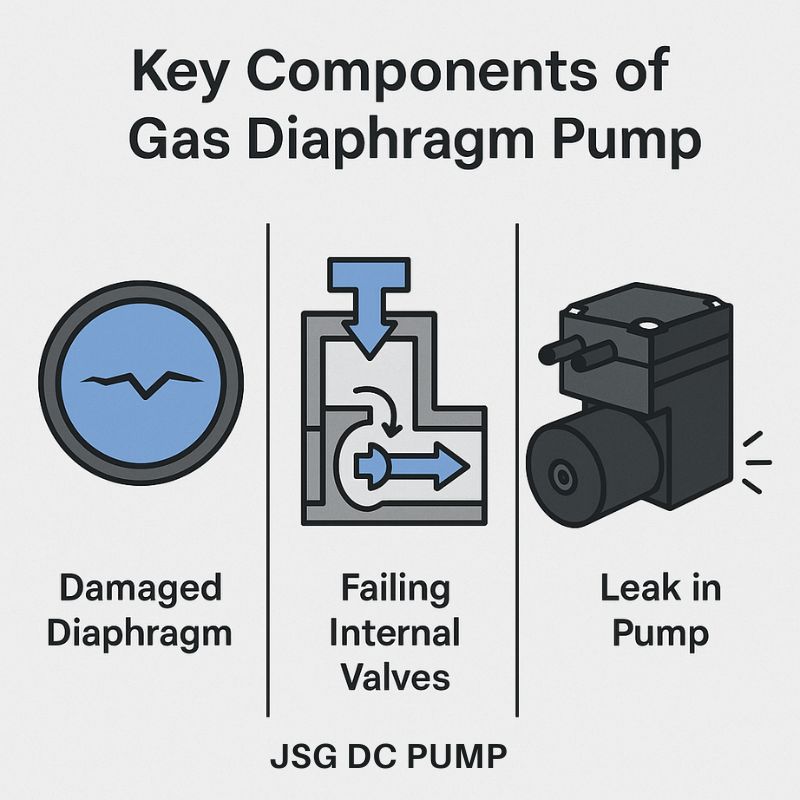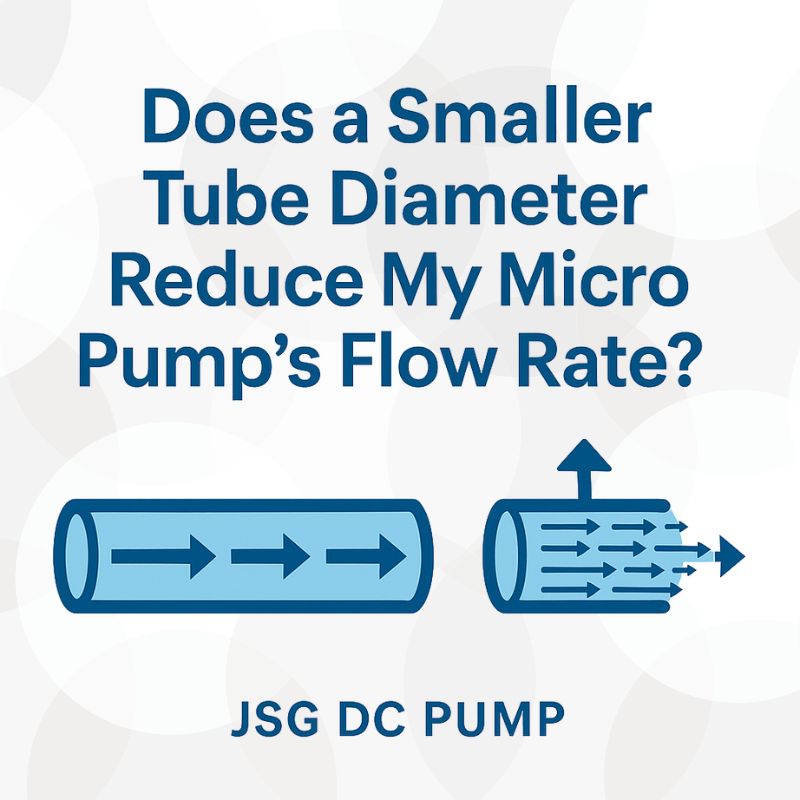You’ve been tasked with sourcing micro pumps, but the technical jargon is a minefield. Choose the wrong supplier, and you risk product failures, supply chain nightmares, and blowing your budget on a component that simply doesn’t work.
Before contacting a micro diaphragm pump manufacturer, procurement managers must clearly define the application’s technical needs (flow, pressure, life), understand the trade-offs between standard and custom models, and prepare questions to evaluate the supplier’s production capacity, quality control, and partnership potential.
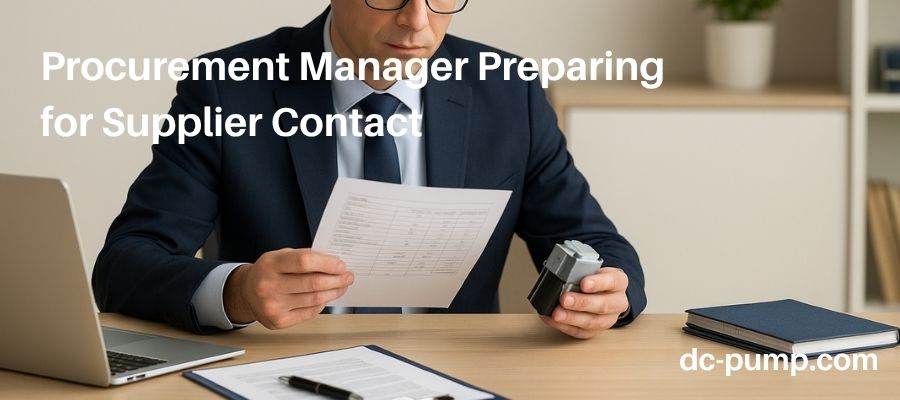
Over my 22 years at JSG DC PUMP, I’ve seen the most successful sourcing partnerships begin not with a price request, but with a conversation. The managers who come prepared with the right information and the right questions are the ones who build reliable products and stable supply chains. They understand that sourcing a critical component like a pump is about finding a long-term partner, not just a vendor. To help you become one of them, I’ve outlined the key areas you need to consider before making that first call.
Aren’t All Pumps the Same? Why Do Technical Specs Matter So Much?
You have a budget and a deadline, and you just need a pump that moves air. You might be tempted to find the lowest-cost option that seems to fit, but this approach is fraught with risk.
Every application has a unique “performance fingerprint.” Providing precise technical specifications for flow, pressure, voltage, and size is the most critical first step. Without these, a manufacturer cannot provide a viable solution.
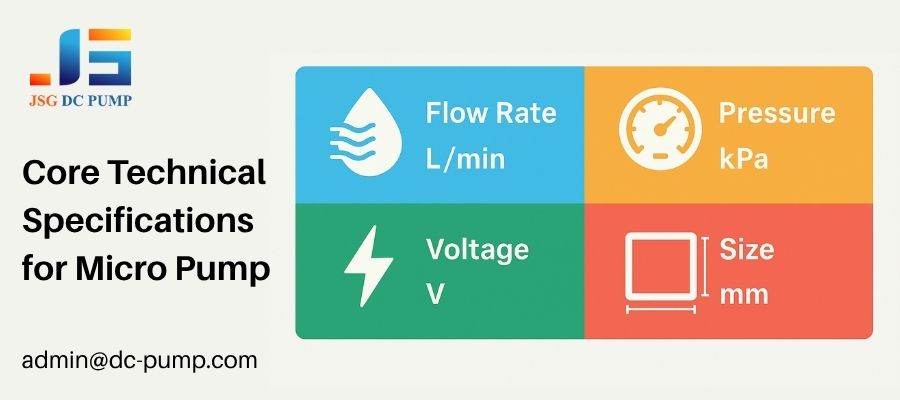
A pump is not a commodity; it’s the heart of your device. A manufacturer needs data to find the right pump, not a guess. Before you contact us or any other supplier, work with your engineering team to define these four pillars:
- Flow Rate (L/min): How much air or gas needs to be moved per minute? Is it a constant flow or intermittent?
- Pressure / Vacuum (kPa): What is the target pressure (positive) or vacuum (negative) the pump must achieve?
- Voltage (V): What is the power source for your device? (e.g., 3V, 5V, 12V, 24V DC).
- Target Lifespan (Hours): How many hours of operation must the pump endure? A medical device needing 10,000 hours is vastly different from a consumer gadget needing 500 hours.
Coming to a manufacturer with this data instantly elevates the conversation from a vague inquiry to a productive technical discussion. It shows you’ve done your homework and allows us to immediately start solving your problem.
Should I Choose a Standard Pump or a Custom Solution?
You see a catalogue with hundreds of “standard” pumps and wonder if one will work. Or maybe your device has unique demands, and you think you need something built from scratch. Which path is right?
Standard pumps offer speed and cost-effectiveness for common applications. Custom (OEM/ODM) solutions provide optimized performance for unique challenges but involve NRE costs and longer lead times. The right choice depends on your project’s specific needs and constraints.
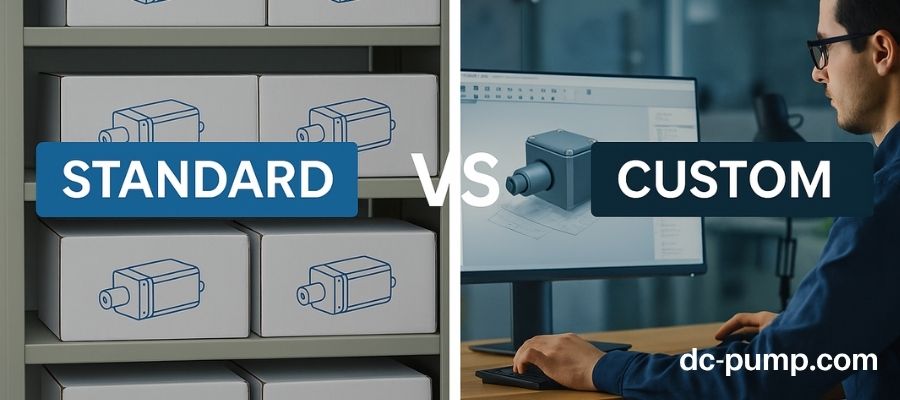
As a procurement manager, you need to weigh the pros and cons in the context of your business goals. At JSG, we support all models (OBM, ODM, OEM), so we help clients make this decision daily.
| Aspect | Standard (Off-the-Shelf) | Custom (OEM/ODM) |
|---|---|---|
| Performance | Good for general needs | Optimized for your exact requirements |
| Cost | Lower unit cost, no NRE fees | Higher unit cost, may have NRE |
| Lead Time | Short, products are in stock | Longer, requires design & testing phases |
| Best For | Prototyping, standard applications | High-volume, high-performance needs |
| Your Question | “What is your closest standard model to these specs?” | “Can you modify a pump to meet these unique challenges?” |
Knowing which path you’re likely headed down helps a manufacturer guide you more efficiently. If you need a custom solution, be prepared to discuss non-recurring engineering (NRE) costs and a multi-stage development timeline.
How Does a Micropump Factory Prove Lifespan and Reliability?
Every supplier will claim their pumps have a “long life.” But what does that really mean? A cheap pump that fails in the field can cost your company millions in recalls, warranty claims, and brand damage.
True reliability isn’t just a marketing claim; it’s proven by rigorous life-testing data, material quality, and robust manufacturing processes. Ask a micropump factory for test reports and specifics on motor and diaphragm materials.
When you vet a supplier, dig deeper than the datasheet. The lifespan of a diaphragm pump is determined by its two most critical components: the motor and the diaphragm.
- The Motor: The biggest differentiator is brushed vs. brushless. A coreless brushed motor is a good, cost-effective choice for intermittent use (e.g., 500-2,000 hours). A brushless motor is a premium choice essential for long-life, continuous-duty applications (e.g., 5,000-15,000+ hours).
- The Diaphragm: The material of this flexible membrane is key. A standard EPDM diaphragm is great for air. However, if your application involves ozone, high temperatures, or chemical vapors, you may need a specialized material like FKM to prevent premature failure.
Ask the manufacturer: “Can you provide life-test data for a pump with this motor type under these operating conditions?” A reputable manufacturer will have this data ready.
What Should I Ask a Micro Diaphragm Pump Manufacturer About Their Capabilities?
The perfect pump sample is useless if the manufacturer can’t produce it at scale, meet your quality standards, or deliver it on time. You are not just buying a component; you are qualifying a supply chain partner.
Beyond the product, you must evaluate a micro pump manufacturer on production capacity, quality management systems (like ISO 9001), and their experience in your specific industry. Their capabilities are a direct indicator of their ability to be a reliable partner.
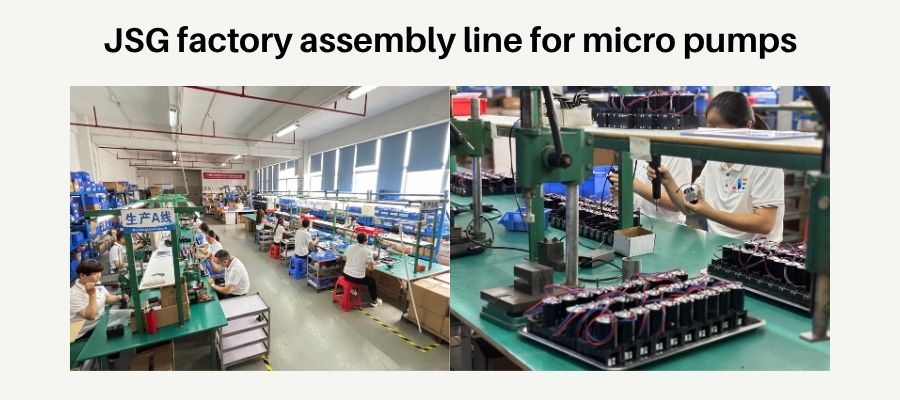
Don’t be afraid to ask tough questions about their operations. This is standard due diligence. In my experience, transparent and capable manufacturers welcome these inquiries. Here are some questions to have ready:
- “What is your monthly production capacity for this type of pump?”
- “Are you ISO 9001 certified? Can you provide the certificate?”
- “What is your standard quality control process? What functional tests are performed on every pump before it ships?”
- “Have you supplied pumps for similar applications in the [medical/automotive/appliance] industry before?”
- “What is your standard lead time for an order of X thousand units after the sample is approved?”
Their answers will give you a clear picture of their professionalism, scale, and ability to mitigate risk in your supply chain.
How Does the Sampling and Prototyping Process Work?
You’ve identified a promising manufacturer and a potential pump model. Before you can issue a purchase order, your engineering team needs to test it. How should you manage the sampling process effectively?
The sampling process is a collaborative step to confirm the pump’s performance in your actual device. You should request samples for testing, provide detailed feedback, and be prepared for potential minor modifications to achieve a perfect fit.
Managing this stage well can save weeks or months of development time.
- Request Samples: Based on your initial technical discussion, the manufacturer will suggest one or more standard or slightly modified pumps. Be clear about how many units your team needs for testing.
- Test Thoroughly: Your engineers should install the pump in your prototype device and measure its performance. Don’t just test it on a bench; test it in the real application.
- Provide Specific Feedback: If the pump isn’t perfect, provide clear, data-driven feedback. Don’t just say “it’s too noisy.” Say “the noise level at 12 inches is 55 dB; our target is under 50 dB.” Or, “it’s only reaching 30 kPa, we need it to reach 40 kPa.”
- Iterate: A good manufacturing partner will take this feedback and suggest modifications. This might involve changing the motor, adjusting the stroke, or using a different material. This iterative loop is normal and is the path to an optimized, successful product.
How Can You Tell if a Miniature Pump Supplier is a True Partner?
You can buy pumps from countless vendors. But when a problem arises—a performance issue, a logistics challenge, a future design change—will your supplier be there to help you solve it?
The best miniature pump supplier acts as a long-term partner, offering technical support, collaborative problem-solving, and strategic advice. Evaluate their communication style and willingness to engage with your engineering team as a measure of their partnership potential.
This is a “soft” factor, but it’s one of the most important for long-term success. A transactional vendor sells you a part. A partner invests in your success. A few years ago, a client in the medical device field faced a new regulatory requirement that demanded a slight change in their pump’s performance. Because we had been working with them as a partner, our engineering team was able to quickly develop and validate a modified pump, allowing them to meet the new regulations without a product redesign. A vendor just selling off-the-shelf parts could never have done that. Look for a supplier who listens, asks smart questions, and is eager to connect their engineers with your engineers. That is the hallmark of a true partner.
Why Choose JSG DC PUMP Micro Diaphragm Pump Manufacturer?
You know what to look for, but finding a factory that has it all is difficult. Don’t risk your project on an unknown vendor when an experienced, proven partner is ready to help.
Choose JSG because we combine 22+ years of R&D experience with a flexible OEM/ODM/OBM partnership model. We deliver high-quality, globally trusted pumps and provide the expert engineering support needed to guarantee your project’s success from start to finish.
As one of the world’s leading suppliers, we have built our reputation on being the partner that procurement managers can trust. Our foundation is over two decades of deep industry experience, with a decade of exporting our products to the most demanding markets in Europe, the US, and Asia. This isn’t just about selling pumps; it’s about providing proven solutions. Whether you need a standard pump from our 400+ prototypes (OBM), a modified version for specific performance (ODM), or a completely custom-designed solution (OEM), our engineering team is structured to support you. We obsess over the details that matter—high pressure, low noise, and long lifespan—because we know that’s what your product’s performance depends on. We are not just another vendor; we are your ideal partner.
Conclusion
By defining your technical needs, understanding your options, and asking insightful questions about capability and reliability, you can transform sourcing from a risk into a strategic advantage for your company.
At JSG DC PUMP, we specialize in helping global OEMs and procurement managers make confident decisions backed by data, engineering support, and proven manufacturing experience.
💼 Partner with us today to secure reliable, high-performance micro diaphragm pump solutions that match your exact requirements.
📩 Contact: admin@dc-pump.com


